Positive regulatory control loop between gut leptin and intestinal GLUT2/GLUT5 transporters links to hepatic metabolic functions in rodents
- PMID: 19956534
- PMCID: PMC2780353
- DOI: 10.1371/journal.pone.0007935
Positive regulatory control loop between gut leptin and intestinal GLUT2/GLUT5 transporters links to hepatic metabolic functions in rodents
Abstract
Background and aims: The small intestine is the major site of absorption of dietary sugars. The rate at which they enter and exit the intestine has a major effect on blood glucose homeostasis. In this study, we determine the effects of luminal leptin on activity/expression of GLUT2 and GLUT5 transporters in response to sugars intake and analyse their physiological consequences.
Methodology: Wistar rats, wild type and AMPKalpha(2) (-/-) mice were used. In vitro and in vivo isolated jejunal loops were used to quantify transport of fructose and galactose in the absence and the presence of leptin. The effects of fructose and galactose on gastric leptin release were determined. The effects of leptin given orally without or with fructose were determined on the expression of GLUT2/5, on some gluconeogenesis and lipogenic enzymes in the intestine and the liver.
Principal findings: First, in vitro luminal leptin activating its receptors coupled to PKCbetaII and AMPKalpha, increased insertion of GLUT2/5 into the brush-border membrane leading to enhanced galactose and fructose transport. Second in vivo, oral fructose but not galactose induced in mice a rapid and potent release of gastric leptin in gastric juice without significant changes in plasma leptin levels. Moreover, leptin given orally at a dose reproducing comparable levels to those induced by fructose, stimulated GLUT5-fructose transport, and potentiated fructose-induced: i) increase in blood glucose and mRNA levels of key gluconeogenesis enzymes; ii) increase in blood triglycerides and reduction of mRNA levels of intestinal and hepatic Fasting-induced adipocyte factor (Fiaf) and iii) increase in SREBP-1c, ACC-1, FAS mRNA levels and dephosphorylation/activation of ACC-1 in liver.
Conclusion/significance: These data identify for the first time a positive regulatory control loop between gut leptin and fructose in which fructose triggers release of gastric leptin which, in turn, up-regulates GLUT5 and concurrently modulates metabolic functions in the liver. This loop appears to be a new mechanism (possibly pathogenic) by which fructose consumption rapidly becomes highly lipogenic and deleterious.
Conflict of interest statement
Figures
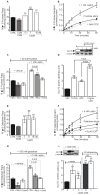

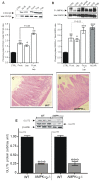
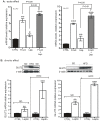
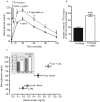
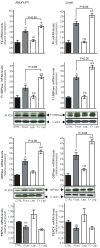
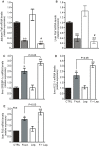
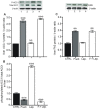


Similar articles
-
Differential patterns of inhibition of the sugar transporters GLUT2, GLUT5 and GLUT7 by flavonoids.Biochem Pharmacol. 2018 Jun;152:11-20. doi: 10.1016/j.bcp.2018.03.011. Epub 2018 Mar 14. Biochem Pharmacol. 2018. PMID: 29548810
-
Expression and function of hexose transporters GLUT1, GLUT2, and GLUT5 in breast cancer-effects of hypoxia.FASEB J. 2018 Sep;32(9):5104-5118. doi: 10.1096/fj.201800360R. Epub 2018 Apr 13. FASEB J. 2018. PMID: 29913554
-
Intestinal deletion of leptin signaling alters activity of nutrient transporters and delayed the onset of obesity in mice.FASEB J. 2014 Sep;28(9):4100-10. doi: 10.1096/fj.14-255158. Epub 2014 Jun 13. FASEB J. 2014. PMID: 24928195 Free PMC article.
-
Glucose transporters in the small intestine in health and disease.Pflugers Arch. 2020 Sep;472(9):1207-1248. doi: 10.1007/s00424-020-02439-5. Epub 2020 Aug 23. Pflugers Arch. 2020. PMID: 32829466 Free PMC article. Review.
-
Intestinal fructose transport and malabsorption in humans.Am J Physiol Gastrointest Liver Physiol. 2011 Feb;300(2):G202-6. doi: 10.1152/ajpgi.00457.2010. Epub 2010 Dec 9. Am J Physiol Gastrointest Liver Physiol. 2011. PMID: 21148401 Review.
Cited by
-
Role of macrophages in the altered epithelial function during a type 2 immune response induced by enteric nematode infection.PLoS One. 2014 Jan 23;9(1):e84763. doi: 10.1371/journal.pone.0084763. eCollection 2014. PLoS One. 2014. PMID: 24465430 Free PMC article.
-
The negative and detrimental effects of high fructose on the liver, with special reference to metabolic disorders.Diabetes Metab Syndr Obes. 2019 May 27;12:821-826. doi: 10.2147/DMSO.S198968. eCollection 2019. Diabetes Metab Syndr Obes. 2019. PMID: 31213868 Free PMC article. Review.
-
Hepatic expression and cellular distribution of the glucose transporter family.World J Gastroenterol. 2012 Dec 14;18(46):6771-81. doi: 10.3748/wjg.v18.i46.6771. World J Gastroenterol. 2012. PMID: 23239915 Free PMC article. Review.
-
Oxygen in the regulation of intestinal epithelial transport.J Physiol. 2014 Jun 15;592(12):2473-89. doi: 10.1113/jphysiol.2013.270249. Epub 2014 Apr 7. J Physiol. 2014. PMID: 24710059 Free PMC article. Review.
-
Mechanisms of Glucose Absorption in the Small Intestine in Health and Metabolic Diseases and Their Role in Appetite Regulation.Nutrients. 2021 Jul 20;13(7):2474. doi: 10.3390/nu13072474. Nutrients. 2021. PMID: 34371983 Free PMC article. Review.
References
-
- Kellett GL, Brot-Laroche E. Apical GLUT2: a major pathway of intestinal sugar absorption. Diabetes. 2005;54:3056–3062. - PubMed
-
- Ishikawa Y, Eguchi T, Ishida H. Mechanism of beta-adrenergic agonist-induced transmural transport of glucose in rat small intestine. Regulation of phosphorylation of SGLT1 controls the function. Biochim Biophys Acta. 1997;1357:306–318. - PubMed
Publication types
MeSH terms
Substances
LinkOut - more resources
Full Text Sources
Molecular Biology Databases
Research Materials
Miscellaneous

